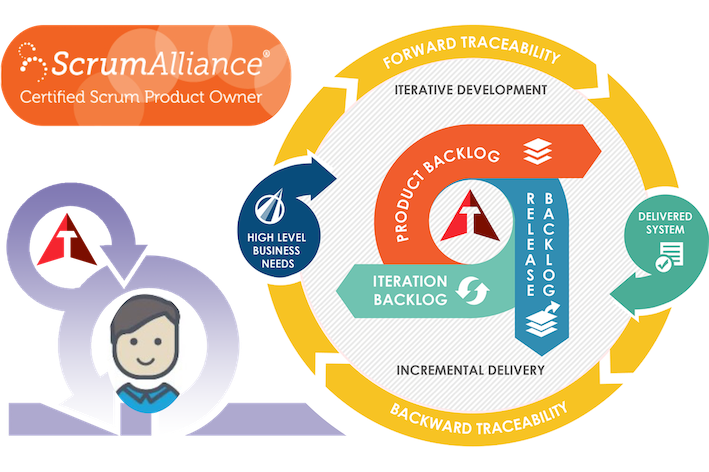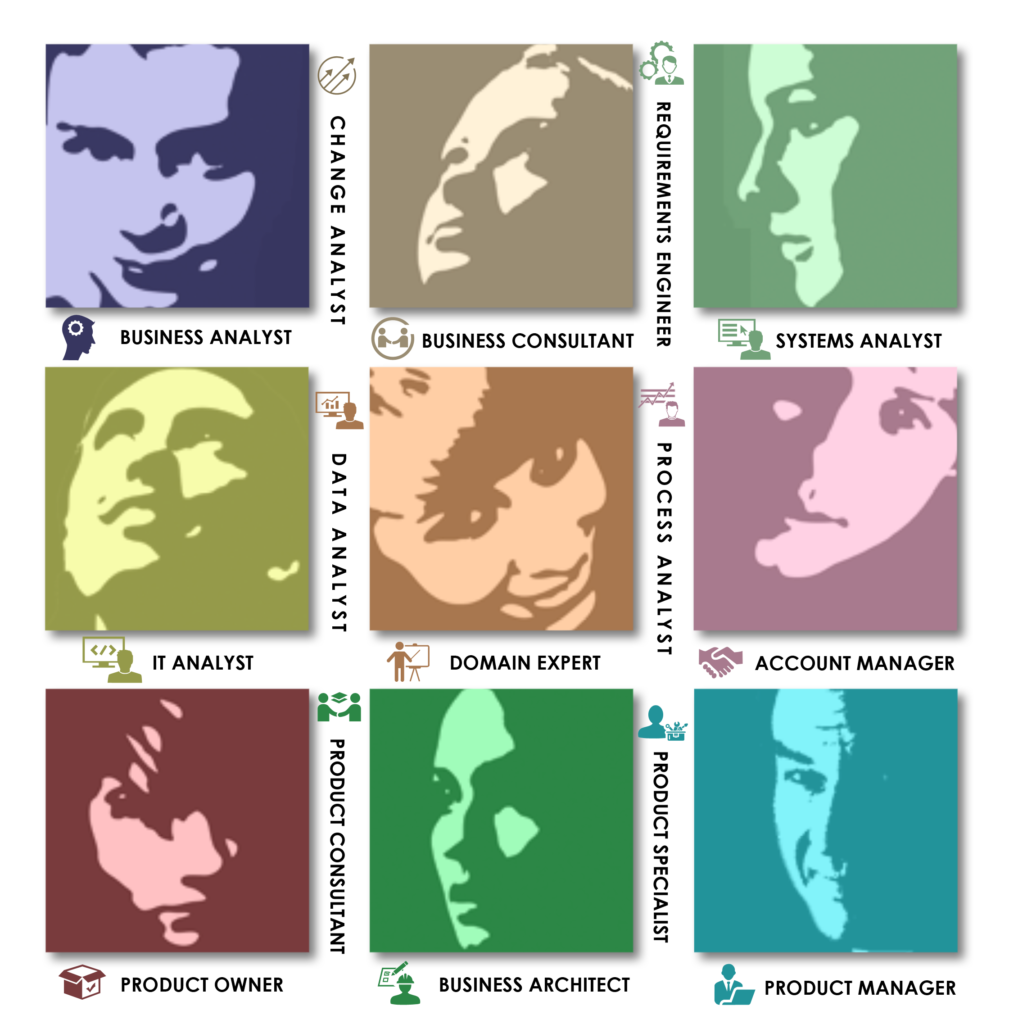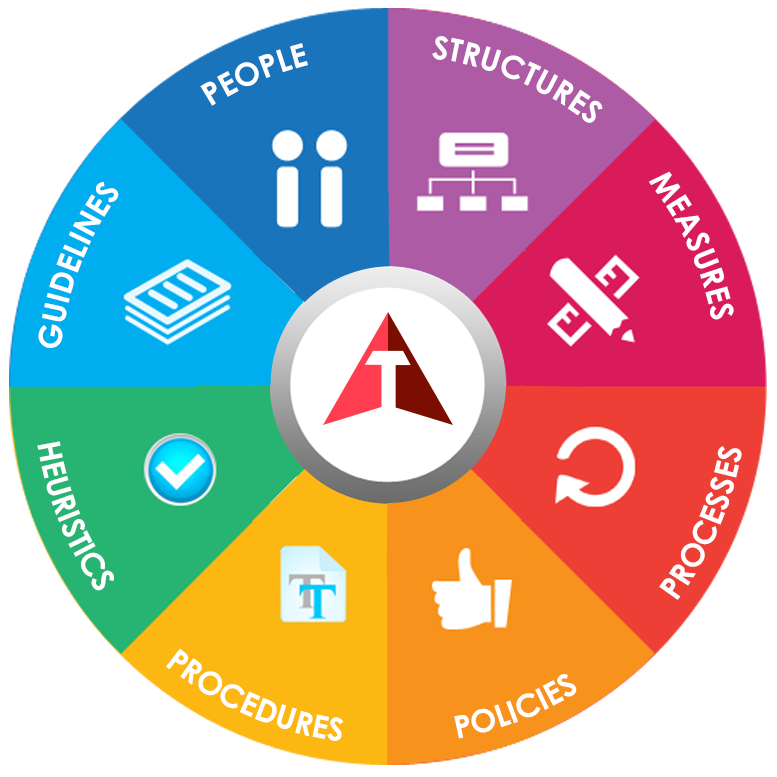Scrum Product Owner Certification Masterclass
Certification Course on Scrum Product Owner's Role, Practices, Techniques and Tools. Select Course Date and Time Based on Your Convenience!
- Instructor-led, Online
- Course Category: Agile Development, Certification, Digital Skills
GBP
250
Instructor-led, Online
Duration: 16 Hours
Course Code: TXV-SC-PO1
Skill Level: All Levels
Scrum Product Owner Certification Masterclass
Overview
Organisations and individuals grow over time, adjusting themselves to the changes, situations, market demands and business drivers. They mature in their processes, improving continually their products, services and operations. To deliver these, teams need constant guidance, direction, priorities and a hand-on-the-pulse of customers. Scrum Product Owner does precisely these and more, by acting as a bridge between the teams and key stakeholders i.e., customers and end-users. POs ensure that the products, services and solutions meet the customers’ needs, market demands and users’ requirements. Take the TEXAVI Scrum Product Owner Certification course to learn about the key practices, techniques and tools for the Product Owner, get the coveted skills in the market and boost your career potential.


Who can attend?
The product owner certification course is suitable for professionals working in the industry or academia, aspirants and early stage professionals, as well as students in universities and colleges. Professionals and aspirants from technology, business, operations or sales are all welcome to explore and understand the power of Scrum and the vital contribution of Scrum Product Owner. The course is suitable for…
- Anybody with or without work experience
- IT professionals (eg., Project managers, developers, analysts, testers, business managers, CXOs)
- Non-IT people who want to learn IT skills thinking of a career switch
- Graduates and university students who aspire to get into IT industry
- Students who have just passed their B. Tec, A-Levels or college studies

COURSE OUTLINE
-
Module 1: Agile – Context and Overview
-
Module 2: The Scrum Framework
-
Module 3: Principles and Practices in Scrum
-
Module 4: PO Role, Responsibilities and Skills
-
Module 5: Scrum Process and Events
-
Module 6: Product Vision and Roadmap
-
Module 7: Size and Effort Estimation
-
Module 8: Product and Sprint Backlogs
-
Module 9: Product Scoping and Prioritisation
-
Module 10: PO and Release Management

What will you learn?
- Define what Scrum is and explain the key facets of Scrum
- Explain how Scrum sits within the other agile methods eg., XP, SAFe, Kanban
- Identify the similarities and differences between Scrum and other agile methods
- Describe the benefits and value-add of Scrum
- Discuss the origin, evolution and adoption of Scrum agile methodology
- Explain the contexts and use cases for applying Scrum
- Highlight the three roles and their responsibilities in Scrum
- Explain the responsibilities and expectations from Product Owner
- Elaborate on the key features and practices of Scrum
- Discuss why Sprint is the spirit of Scrum
- Describe the various Scrum ceremonies and events
- Daily Scrum
- Sprint planning
- Sprint execution
- Sprint review
- Sprint retrospective
- List the inputs, activities, outputs and roles involved in the Scrum events
- Explain the involvement and contribution of PO in the Scrum events
- Explain the key artefacts, work products and deliverables in Scrum
- Product backlog ( and product backlog items incl. user stories)
- Definition of Done (DOD) and Definition of Ready (DoR)
- Release burndown chart and Sprint burndown chart
- Describe how product owner works with the dev team and scrum master
- Explain the engagement and communication of PO with customers and end-users
- Elaborate on the OKR (Objectives and Key Results) framework for POs
- Discuss the popular techniques and tools used in Scrum
- MoSCoW prioritisation
- Planning Poker and Tee-shirt sizing estimation
- Kanban/Scrum team board
- User stories
- BDD acceptance criteria aka Cucumber/Gherkin statements
- Backlog grooming
- Story refinement
- Relate all the above artefacts, techniques with TEXAVI’s case studies
- Discuss how PO does reviews of work products and gives sign-offs
- Illustrate the use of product vision and product goals in Scrum projects
- Elaborate on the SMART objectives for product’s goals
- Explain the link between the vision and product roadmap
- Describe the flow of work between Product, Release and Sprint backlogs
- Highlight the different types of estimations:
- Size
- Effort
- Schedule
- Cost
- Discuss the various evaluation levels for estimates in Scrum scope
- Explain the approach and methodology of relative estimation
- Specify the techniques used in relative estimation – size and duration
- Expand on the DEEP principle applicable for product backlog
- Detailed appropriately
- Estimated
- Emergent
- Prioritised
- Explain product backlog grooming and its impacts
- Elaborate on the importance of prioritisation in Scrum projects
- Highlight how PO makes decisions based on priorities
- Describe the steps involved in the prioritisation of product backlog items
- Discuss the method and use of MoSCoW technique
- Discuss the Kano model and explain the steps involved
- Illustrate the goals and value from managing releases in a project
- Explain how planning, product roadmap and release management work
- Define what is team velocity and explain its significance
- Specify the different modes for understanding progress in Scrum
- Explain the use of release burndown charts and scrum team boards
- Daily Scrum
- Sprint planning
- Sprint execution
- Sprint review
- Sprint retrospective
- Product backlog ( and product backlog items incl. user stories)
- Definition of Done (DOD) and Definition of Ready (DoR)
- Release burndown chart and Sprint burndown chart
- MoSCoW prioritisation
- Planning Poker and Tee-shirt sizing estimation
- Kanban/Scrum team board
- User stories
- BDD acceptance criteria aka Cucumber/Gherkin statements
- Backlog grooming
- Story refinement
- Size
- Effort
- Schedule
- Cost
- Detailed appropriately
- Estimated
- Emergent
- Prioritised

What do you need?
There are no pre-requisites for this course. There is no need for any prior experience, working knowledge or awareness of software development or projects experience. The course is suitable for experienced professionals working in the industry or academia, aspirants and early stage professionals, as well as students in universities and colleges. Professionals and aspirants from technology, business, operations or sales are all welcome to explore and understand the power of Scrum and collaborative, agile working.

WHAT'S INCLUDED?
- 24×7 access to TEXAVI’s high quality course content
- Practical insights from real life IT projects
- Course completion certificate
- Case studies, examples and illustrations
- Interactive quizzes and challenges
- Job aids, resources and tools
- Access to TEXAVI’s collaborative digital platform

Why Texavi?
Learn real-world, practical skills from practising professionals, not just theoritical knowledge from trainers!
-
TEXAVI is a proven leader in delivering IT learning, worldwide
-
We are not just trainers, but practising IT professionals with 25+ years of work exp
-
Our courses get you job-ready with practical and real-time insights
-
Qualify for certificates upon completion and complete our assessments
-
Pave way for industry-recognised certifications
-
Access to treasure of Texavi’s high-quality, content-rich resources and materials
-
Get discount voucher to our popular courses on Udemy
-
24×7 access to Texavi’s interactive platform with personalised content

Sample Course Video
TEXAVI Tests
Test Your Knowledge

Take the Texavi Tests and challenge yourself, simply click the below links and start the interactive quiz…
Trainer Profile

Your trainer for this course is Pardha Saradhi Mantravadi. Pardha is a seasoned and well-qualified trainer, coach, mentor, influencer and thought leader. He has rich and varied IT-industry experience of 25 years, working in different roles as an IT professional with blue-chip organisations viz., HSBC, Deutsche Bank, Dyson, Asda, Cambridge University Press, Roche, King’s College London , Royal Society of Chemistry etc. Pardha delivers his training sessions by blending the concepts and principles with practical insights from real-life projects and programs…click here to view the complete trainer profile.
Reviews
“The delivery was consistent, thoughtful and measured. Texavi’s masterclass worked well for me.”
– Louise Caldwell, OMT Group
“I enjoyed the bootcamp and found it very inspiring. I found your description of digital transformation very useful and I liked the examples that were given about successful digital businesses.”
– Dr. Carrie Mowatt, Royal Society of Chemistry
“What I like most about Pardha is the way he easily blends empathy for users within day-to-day software development tasks. This mix of vision and execution is rare and powerful.”
– Sarbajit Sen, Steelwedge Software
“Recently Texavi conducted a workshop on Agile methodologies. The trainer’s knowledge on Agile methodology has its roots grounded in experience.”
– Tazeen Sheikh, Mastek
” The trainer is very well-informed. I learnt a lot of background to digital transformation and artificial intelligence and how businesses can use them.”
– Robert Bowles, RSC
“I attended Texavi’s training on Agile Business Analysis and had a lot of takeaways from the session. Pardha’s effective presentation skills supported with context you can relate to, makes the entire experience exhilarating.”
– Abhijeet Majumdar, Zensar Technologies
“The workshop was quite interesting. I found the exercises we did particularly valuable, as it was useful to discuss with the others present, and to then feedback to the wider group.”
– Holly Sheahan, Cambridge Partners
“Excellent speaker, very knowledgeable. Lovely manner and gentle approach.”
– Linda Clifford, Marketing Success
“Texavi has delivered a fantastic product which was above expectations. The ISBE DataHub will support operational and strategic efforts, at the same time reducing the burden of work for staff at KCL.”
– Christine Manoharan, King’s College London
“The workshop was quite interesting, liked the practical and interactive parts. Texavi’s Digital Business Maturity Model is really helpful and necessary for success.”
– Julio C Garcia, Creanto
“The trainer, Pardha is professional yet very friendly, made everyone feel welcome.”
– Chantal Gilbert, BusyBee Consulting
Related Courses
Scrum Fundamentals – Principles and Concepts
Scrum Master Certification Masterclass
Scrum Development Team Certification Masterclass
Agile Methodologies’ Concepts & Principles
Kanban Principles, Practices & Techniques
Lean – Principles, Practices & Techniques
Extreme Programming – Practices & Techniques in XP
Vision and Roadmap in Product Development
Texavi Toolkit
Team TEXAVI created relevant videos, podcasts, blog posts, white papers, posters and articles for your use. Check the below content out to understand more about Scrum and Agile Technologies:
- The Original Scrum Guide – by Ken Schwaber, Jeff Sutherland
- Scrum, an overview video
- Fostering innovation through interaction and collaboration – Texavi blog post
- Best practices in Agile development – Texavi’s video
- Don’t fight change, manage it with agility – Texavi blog post
- Disrupt, fail, hack, lean…top tips to embrace success
- Pervasive, persuasive, personal & wearable – Why Mobile is here to stay
- Testing in agile methodologies – Texavi Poster
- Texavi blogpost on Why designing for ‘average user’ is a myth
- Realm and reach of the new-age product owner
- User testing, the litmus test for your product’s success
